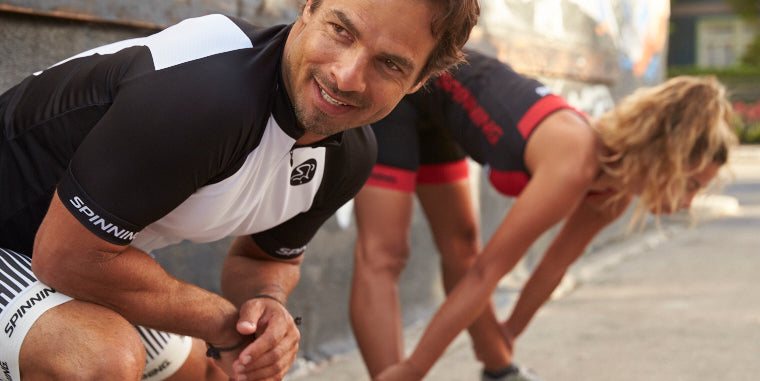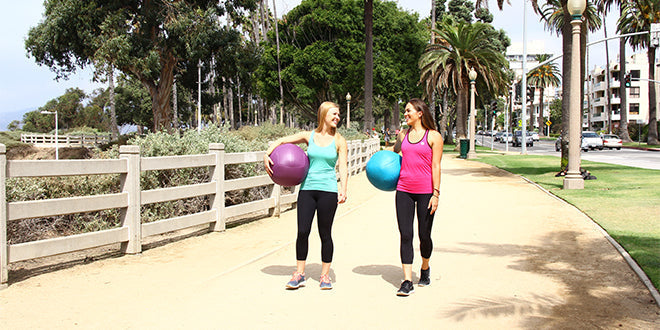Spinning® Master Instructor Peter Pastijn explains why endurance is an absolute must in our training, no matter what your goal is!
Here is one of the most common questions I hear in my Spinning® studio: "I am already fairly fit and I do not have a real weight issue, so why should I do endurance rides, especially 60% of the time?"
In short, the correct answer is that everybody needs endurance! Need a compelling reason why? I'll explain.
Ask Yourself These Questions Before Increasing Intensity
There's a lot of hype about high intensity interval training. But before you begin a high intensity program, answer the following questions:
- Do I spend 60% of my training time in the Endurance Energy Zone®?
- Are most of my cardio sessions comfortable all throughout the year?
- Do I have periods of six to eight weeks each year where I train without losing my breath at all?
There are a lot of promises about the results with high intensity interval training, but you must remember the important basics of the body!
If you are struggling to find a basic explanation for why we need endurance training, here are some facts that make it clear that endurance is a absolute must. Do not expect highly technical explanations to come in the words below. If this comes as a relief to you, great!
Always Follow Rule Number 1: Start with a Strong Base
Rule number one of efficient cardiovascular training is and will remain getting your base training right, which means at least two to three months of aerobic, comfortable training (without gasping for air). If you are trying to achieve long-lasting fitness, health and body composition goals, this first step is an absolute must!
While training at lower intensities, fat is the main energy source. For new or novice participants in the Spinning program, this is definitely your first stop for good fitness and health. Of course, not all exercise can be at low intensities, and at a certain times, you will overcome some serious workloads for results while increasing cycling endurance. But as instructors, we must warn our riders that there is danger with quick-fix solutions that go in the direction of a ‘no pain, no gain’ culture.
Here is a metaphor I like using. Let’s consider ourselves as being like a hybrid car using both fat and glycogen to produce energy (in the same way a hybrid car uses both electricity and gas). When you drive your hybrid, it moves by using a mixture of electricity and gas. You want to save the gas as long as possible, otherwise it will cost you at the pump or make your car stop all together if you’re not careful! Also, the electric battery recharges itself while driving downhill and during braking. Therefore, if the car is used wisely, you will be able to go longer on one tank of gas.
This is exactly how the body works, and this is where it so often goes wrong, resulting in overtraining, decreased fitness and health levels, fatigue, burnout, loss of motivation and, believe it or not, even weight gain!
So let’s compare our bodies to the hybrid car above. At all times, our bodies utilize energy, even while sitting in a couch. And the energy we consume is always a mixture of both fats and glycogen. We have to use that energy wisely to keep ourselves running for the long haul.
Understand the Sources of Energy for Exercise
The general rule is that when training or just existing at lower intensity levels, the mixture of energy used is predominantly coming from fats. While increasing cycling endurance, we all have a specific heart rate at which this mixture shifts to predominantly glycogen (carbohydrates stored in the liver and the muscles).
The thing about these energy sources is how much fat and glycogen your body has in stock. This is exactly why everyone, especially fit individuals with performance goals, have a real need for endurance training.
For example, a man who is 5 ft., 8.5 in. (174 cm) tall, weighs 154 lb (70 kg) with 12% body fat, has 94,500 calories available from fat. This same man will only have about 1,800–1,900 calories available from glycogen. The 94,500 calories available from fat is pretty much a limitless pool of energy you‘d rather use before spending the more scarce 1,900 calories from glycogen. Once you have used these 1,900 calories, you will be slowed down or even stopped, just like our hybrid car that has run out of gas!
Now, you could eat while increasing cycling endurance to keep this stock of glycogen up. Unfortunately, this will not restore your glycogen completely. Your body can only take up a few hundred calories an hour before your digestive system kicks in heavily and slows you down. Training at too high a heart rate will also eventually slow you down and make you stop.
These are some of the reasons why endurance training is needed for everyone, not only for new riders or people looking to loss weight. If you wish to be a healthy person and perform well at endurance sports (especially efforts over 90 minutes), you will not perform your best without sufficient endurance training.
I hope this sheds some light into the matter, which so often is misunderstood. As you see, to keep up a lifetime of fitness, it is a key component for every rider in the Spinning program.
Enjoy the ride!





Leave a comment
This site is protected by hCaptcha and the hCaptcha Privacy Policy and Terms of Service apply.